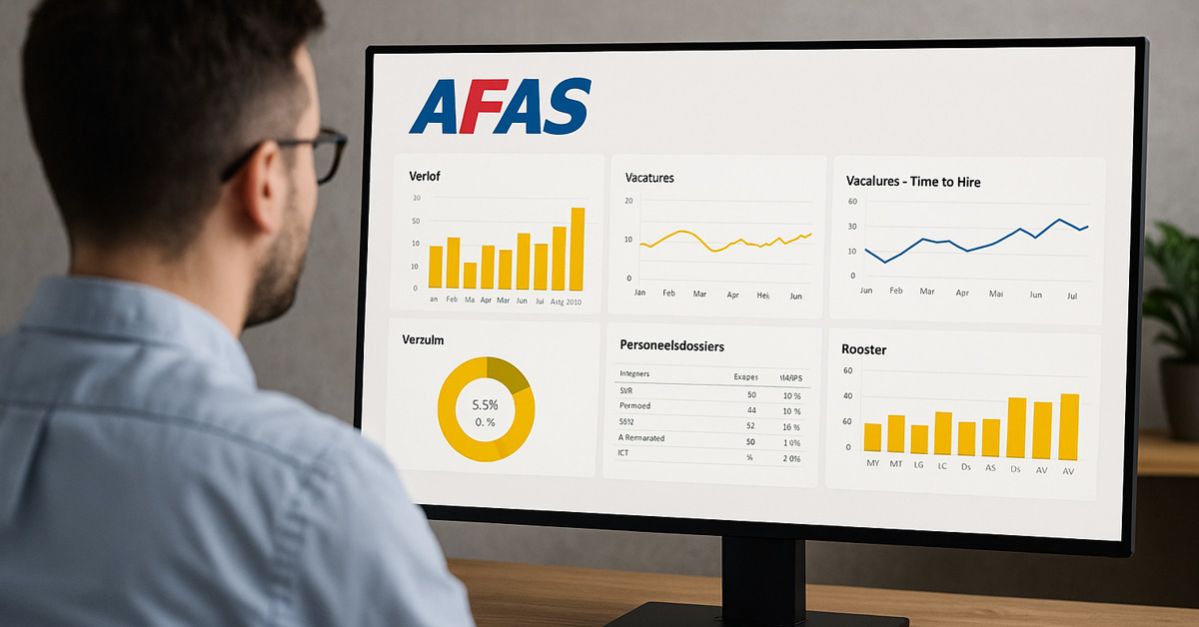
As of December 1, 2025, AFAS will end support for Qlik. From that point on, Power BI will become the default reporting tool within AFAS.
It’s a logical move towards greater flexibility, more visual power, and seamless integration with the Microsoft platform. But with that flexibility comes a new reality: more do-it-yourself.
For organizations used to ready-made Qlik reports, this will require an adjustment. While you will still have access to the data, you're now largely responsible for building, securing, and publishing your own dashboards.
AFAS has already made its BI oData Connector available, allowing you to extract Profit data — including HRM — into Power BI. However, the datasets retrieved through this connector are not always immediately ready for analysis.
What do you get from AFAS?
-
Connectors and template dashboards for standard reporting
Using the oData connector, you can extract data from AFAS Profit into Power BI. AFAS also offers a few standard dashboards — for example, for HR or Finance — which you can use as a starting point. -
A set of predefined datasets to get started You'll have access to predefined datasets containing tables and fields from AFAS, such as employee information, leave requests, or cost categories. These form the foundation for your reports, but they’re not always ready for immediate analysis.
-
You are now responsible for managing and publishing your own dashboards — including access rights and permissions
Unlike Qlik, where AFAS handled the management, ownership now lies with you. You decide who can view which dashboards, how they are shared (for example, via Power BI Service or InSite), and what data is visible to each user.
What do you need to take care of yourself?
-
Build and structure your data model
The provided datasets often contain raw data. You'll need to define relationships, set up calculations, and structure the model before you can create meaningful reports. -
Set up user authorization
User permissions from Profit are not automatically carried over. You’ll have to define who can view which data within Power BI. -
Create visualizations
You'll be responsible for building the dashboards yourself based on the available datasets.
AFAS provides connectors, such as the standard oData feed, to make Profit data accessible in Power BI. However, these datasets are not always ready for immediate analysis. In most cases, you'll need to structure the data model, create relationships, and set up calculations yourself before you can build truly useful reports.
AFAS HR data in Power BI – faster from raw data to real insight
Are you using AFAS HR and looking to leverage Power BI for deeper HR insights? Then you’ve probably realized that the standard AFAS connectors don’t give you everything you need right out of the box.
Data modeling, dashboard creation, and access control largely become your own responsibility.
That’s why we’re developing a Power BI Content Pack specifically for AFAS HR — to skip the complex setup and give you immediate insight into your HR data.
What you’ll get:
✅ A complete Power BI data model tailored to AFAS HR
✅ Ready-to-use dashboards, so you don’t have to start from scratch
✅ The flexibility to build your own visualizations on top of the model
You’ll instantly gain insight into areas such as:
- Leave and absence
- Job openings and time-to-hire
- Employee records
- Scheduling data
- A complete view per employee
No need to model raw datasets or build relationships yourself — we’ve already done the heavy lifting for you.
Coming soon
The Content Pack for AFAS HR is currently in development. Curious about what’s possible or have specific questions? Feel free to get in touch — I’m happy to explore the possibilities with you.
The author
Patrick Dijkhof
I challenge organizations to look beyond the numbers. By actively thinking along with them about their ambitions and pain points, I translate needs into concrete next steps and help set meaningful change in motion.

